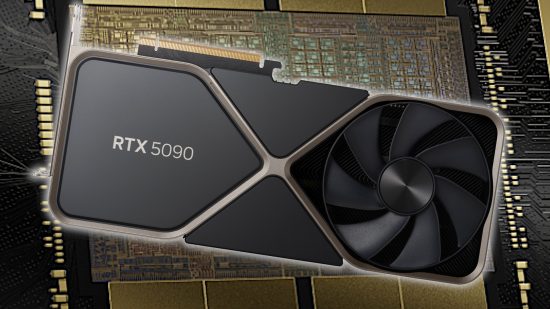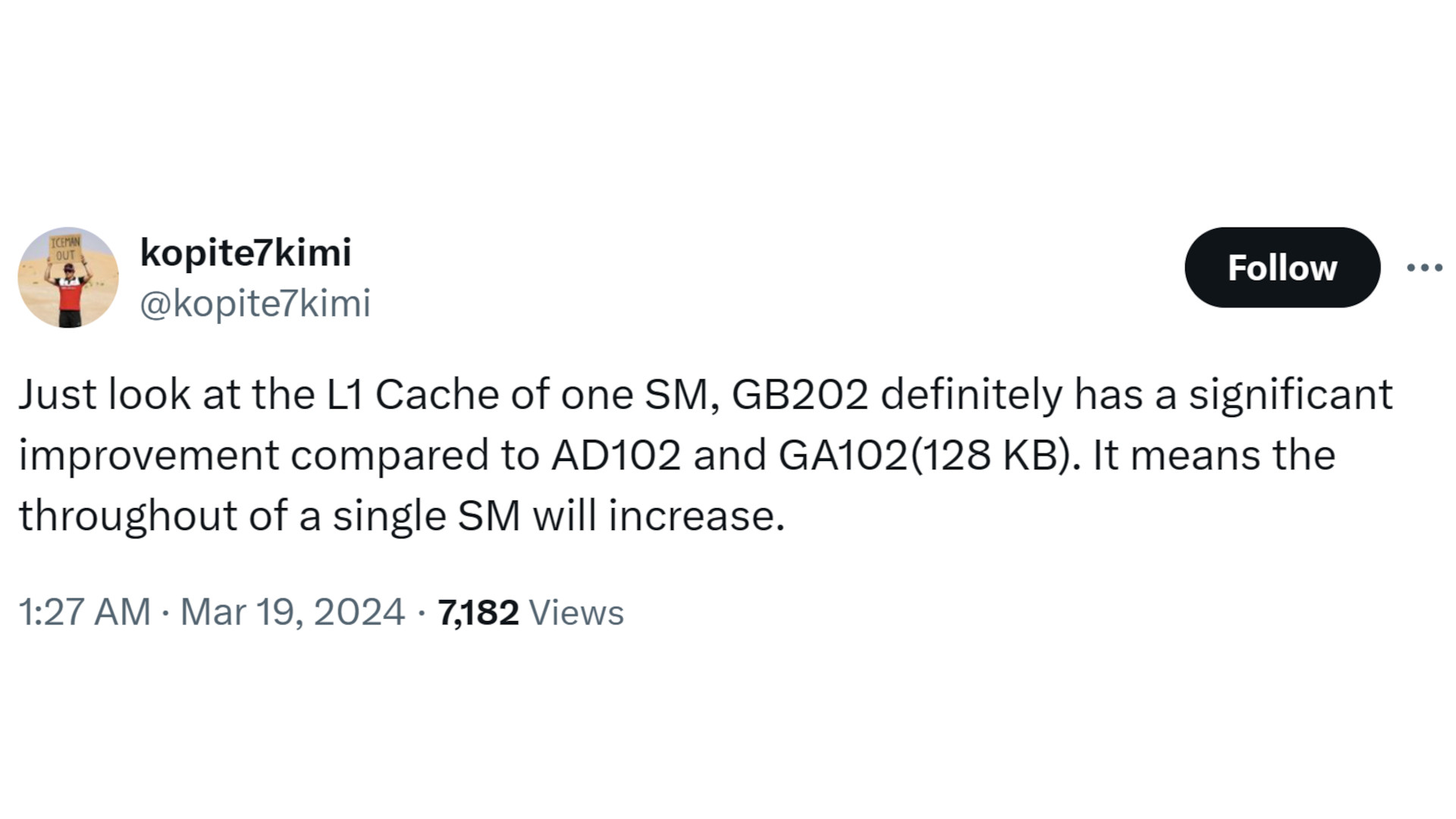At GTC 2024, Nvidia CEO Jensen Huang pulled back the curtain on the company’s newest GPU architecture, Blackwell. While Huang was laser focused on AI and computing during his keynote, Blackwell is the same architecture the company will use for its upcoming GeForce graphics cards, like the RTX 5090. In lieu of any official word, however, leakers have been all too happy to fill some of the gaming-related gaps from the announcement.
The next generation of Nvidia GPUs will undoubtedly take advantage of the architectural improvements offered by Blackwell, raising our performance and feature expectations beyond the best graphics cards of today. The degree to which the RTX 50 series elevates itself above current generation offerings remains to be seen, but new specs leaks shed potential light on the size of this generational leap.
Several hours after the Nvidia keynote, hardware leaker kopite7kimi took to X (formerly Twitter) to share details on GB202, the presumed RTX 50 series flagship GPU. This chip should be at the heart of the GeForce RTX 5090, with previous leaks on RTX 5090 memory bandwidth and RTX 5090 performance painting a picture of a monstrously powerful piece of silicon. Now, kopite7kimi claims it will be built on the same process as the new AI GPUs.
“GB202 will use the same process node as GB100,” kopite7kimi says, which is confirmed to be TSMC 4N, meaning that GB202 GPUs will be fabricated using the same node as AD102, as found in the RTX 4090. Despite these similarities, the Blackwell GPU will benefit from 30% greater transistor density, which will enable Nvidia to pack more gear into the GPU and push performance further.
Blackwell also provides other architectural advantages compared to Lovelace, with kopite7kimi highlighting the higher concentration of L1 cache in each streaming multiprocessor (SM). While they stopped short of specifics, the leaker says “GB202 definitely has a significant improvement compared to AD102 and GA102.” This spec bump should improve performance further, making the RTX 5090 less reliant on slower pools of L2 and L3 cache, even when it can fall back on GDDR7 VRAM.
With the first Blackwell GPUs now revealed, it hopefully won’t be long now until Nvidia gears up to reveal the RTX 50 series release date to the world. However, given that GeForce graphics cards account for little when it comes to Nvidia revenue relative to AI, we wouldn’t be surprised to see the company stick to its previously rumored launch window.
With AMD RDNA 4 imminently expected to take the fight to Nvidia’s RTX 50 series, the near future looks exciting when it comes to graphics cards. That is, of course, if rumors of a new Radeon GPU matching the RTX 4080 hold true.
That said, there’s still plenty to be excited about right now, with falling graphics card prices. If you’re thinking about picking up a new pixel pusher but haven’t installed one before, be sure to read our guide on how to build a gaming PC to avoid any pitfalls.


